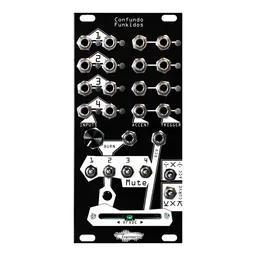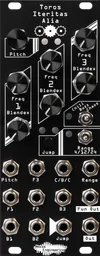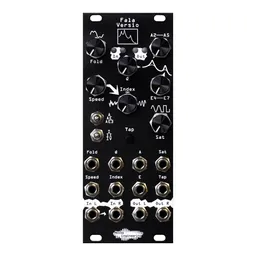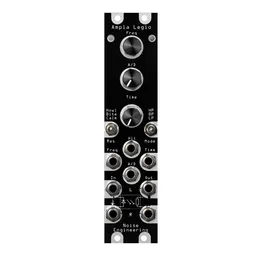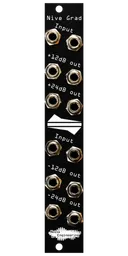It’s utility season here at Noise Engineering, and we’ve got a brand new module for you. Meet Nive Grad: it’s a stereo or dual-mono level shifter that’s perfect for integrating Eurorack with all of your other gear. And in just 4 HP, it’s a compact and helpful addition to any system. Read on to learn more about how it can work in your system, and how we designed it.

Going up (and down, and up, and down again)
Nive Grad has two sections: a section for making things louder, and a section for making things quieter. The top section has +12dB and +24dB outs: the +12dB outs work well for line-level devices (think drum machines, synthesizers, line-level processors, and so on), and the +24dB outs work well for guitars and pedals. The inputs have a very high impedance so NG can even amplify passive guitars. The bottom section is the opposite of the top: there are -12dB and -24dB outs. This means you can take a Eurorack signal and pass it out to a line or pedal-level processor with just a couple of cables.
Since each section has two channels, NG can be used as a stereo utility, or in a dual-mono configuration with multiple devices.
Patching things up
We originally designed Nive Grad to complement Xer Mixa, our system mixer, and make it easy to integrate its routing and mixing capabilities with non-Eurorack gear. Personally, I love using it to integrate a pedal into an aux loop of Xer Mixa, so I can use a reverb or delay pedal as an aux send. Patch the output of a pedal to the top inputs on NG, patch the +24dB out to the stereo aux returns on Xer Mixa, then patch the stereo aux send from the mixer out to the bottom inputs and the -24dB out to the pedal input(s). This will keep everything gainstaged nicely and avoid clipping our pedal.

You can use this same patch with line-level processors, too: just use the +12dB and -12dB jacks instead to keep the signals slightly hotter.
I also have a number of line-level synths in my studio, and sometimes they need a little bit of gain to compete with the levels of Eurorack sources. The +12dB outs on Nive Grad have the perfect amount of gain to bring synths up to volume.
This also leaves the bottom section of NG free to be used as an output module: I’ll often patch the final mix of my patch to the bottom inputs, then patch the -12dB (or -24dB, if it’s a particularly hot patch) outs to my recorder, interface, or speakers.
Of course, POB gives a great overview of Nive Grad in the official manual video, so be sure to check it out if you want to hear it bringing granular goodness and reverberant accents to some patches.
The backstory
When we released Xer Mixa, quite a number of people suggested that we create a level-shifting utility, which inspired us to come up with a few designs. Initially, our ideas were based around variable levels and only adding gain, but we soon realized that we wanted more flexibility and a simpler interface. This led to the idea of the negative-gain section, and a whole lot of testing with external gear.
The results of these tests were interesting: we noticed that in a majority of cases we only used a couple of different gain settings for a majority of devices. Removing gain parameters saved a huge amount of space and reduced costs, and we eventually settled on the patch-programmable concept you see today. We were surprised by how nicely it came together in the end, and it became a good example of keeping things simple.
Nive Grad is shipping now, so if you’d like to add one to your system, head over to our webshop or your favorite retailer to order one today.
